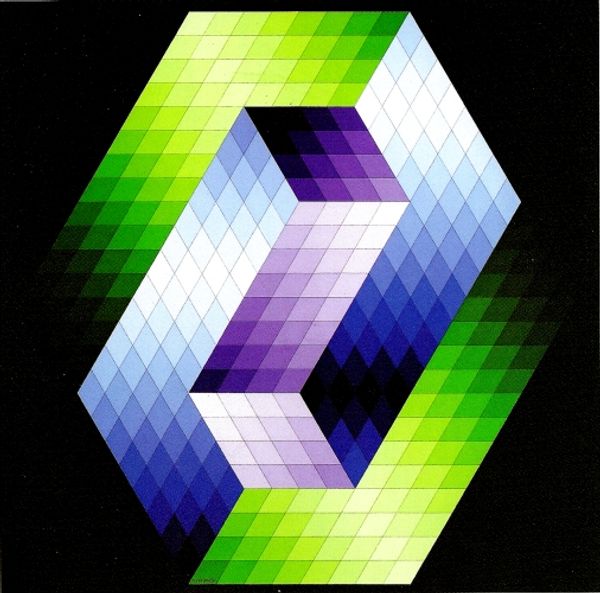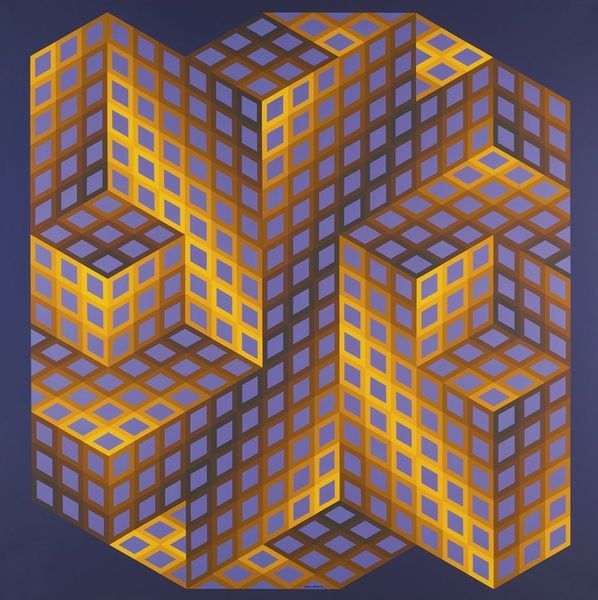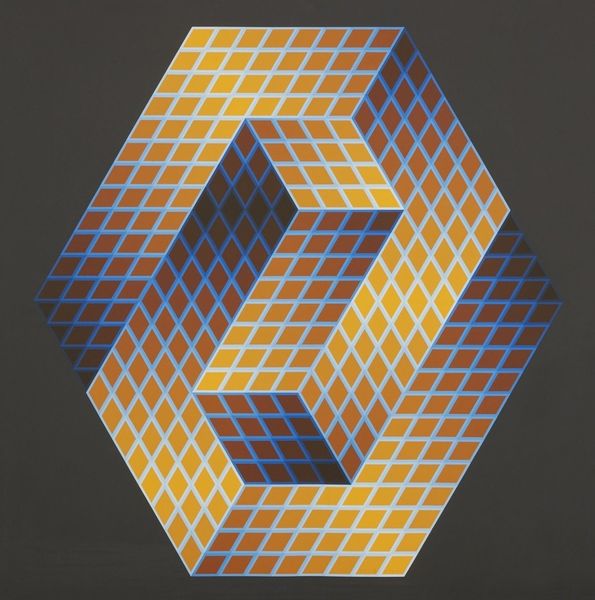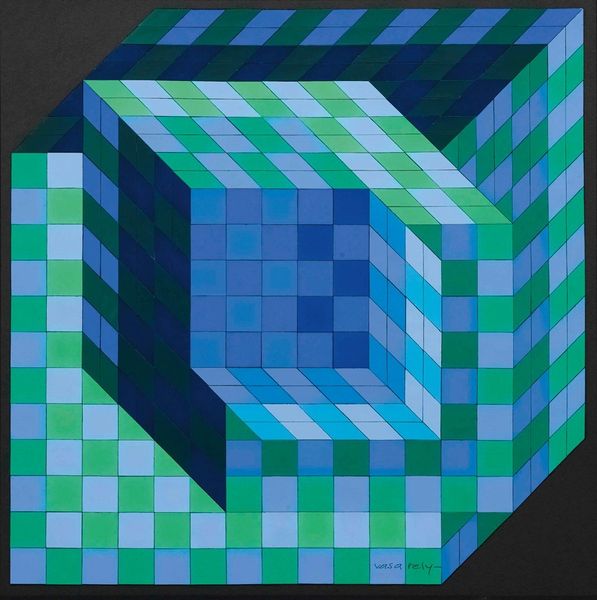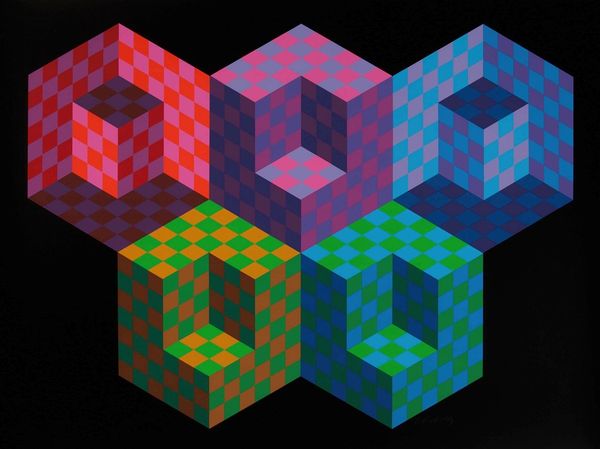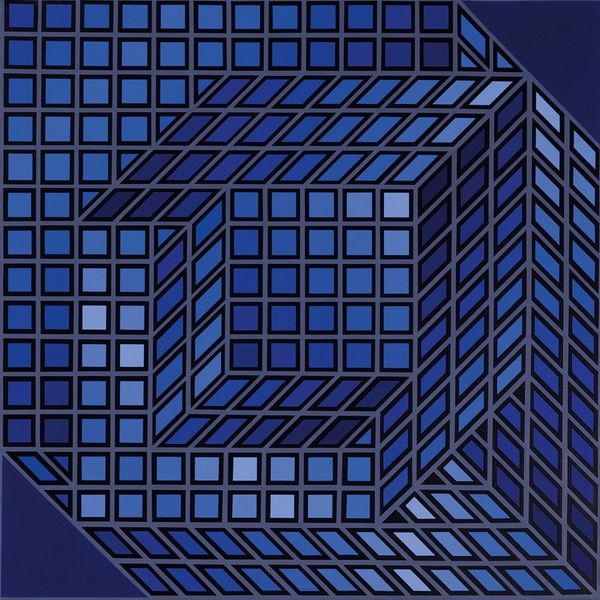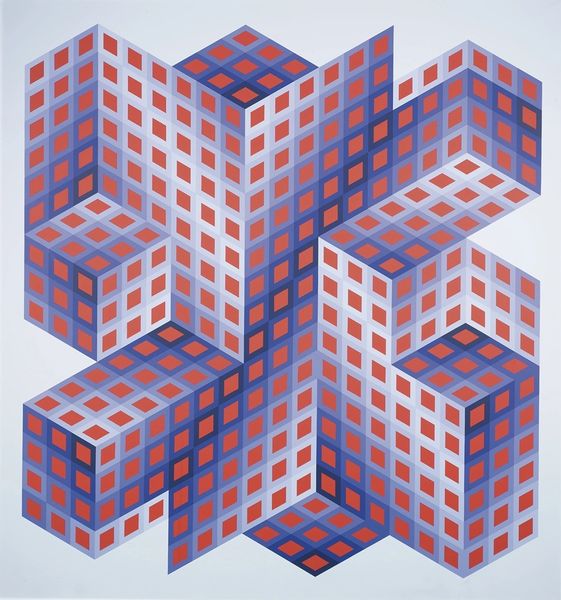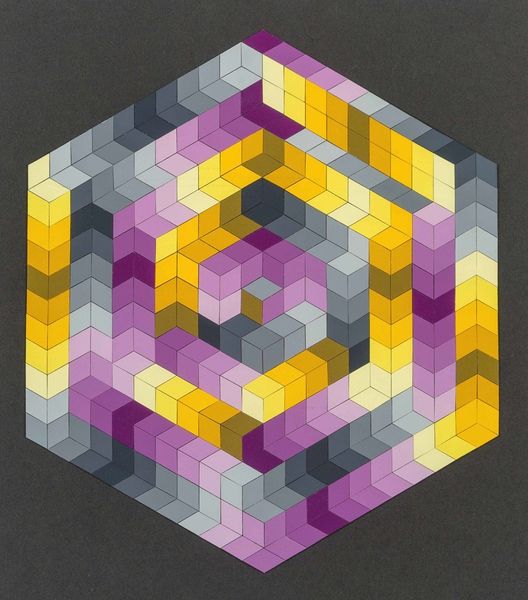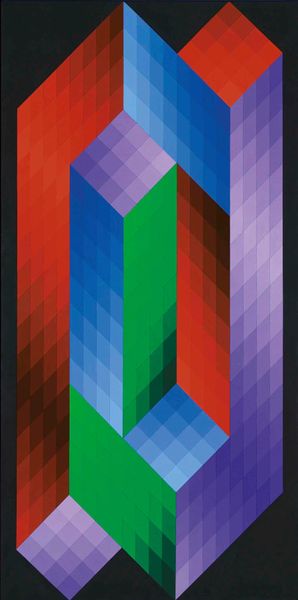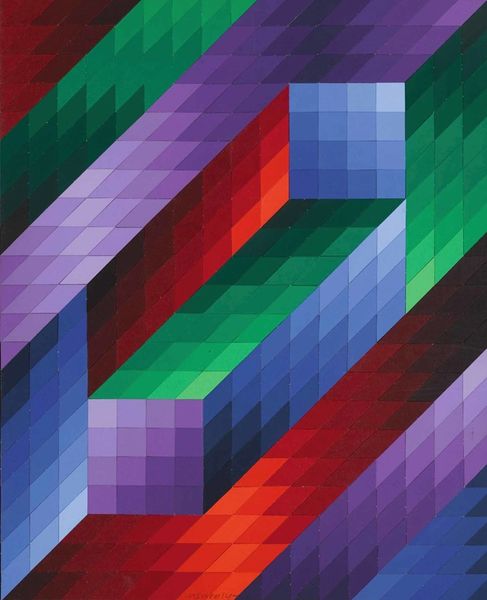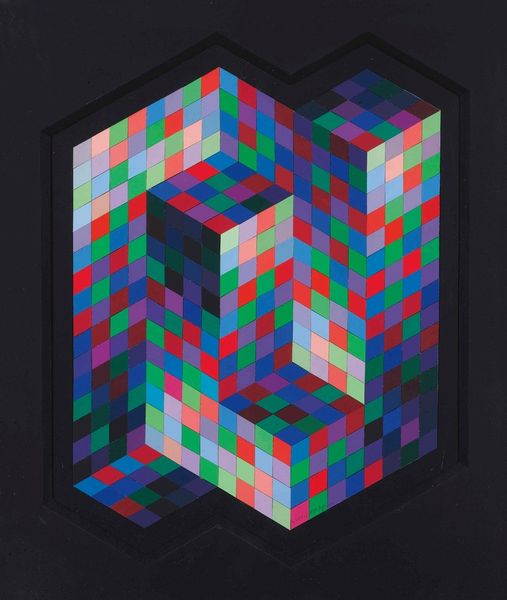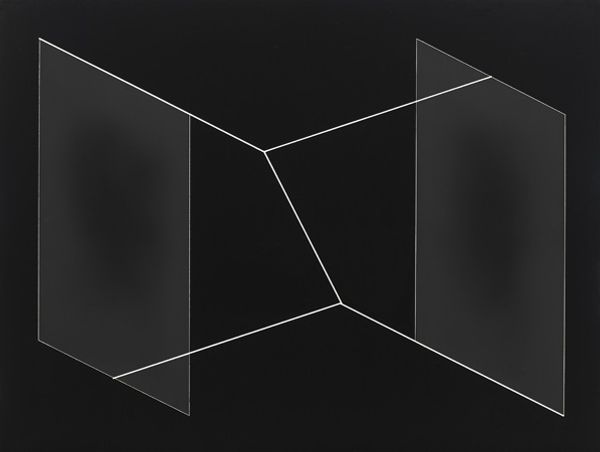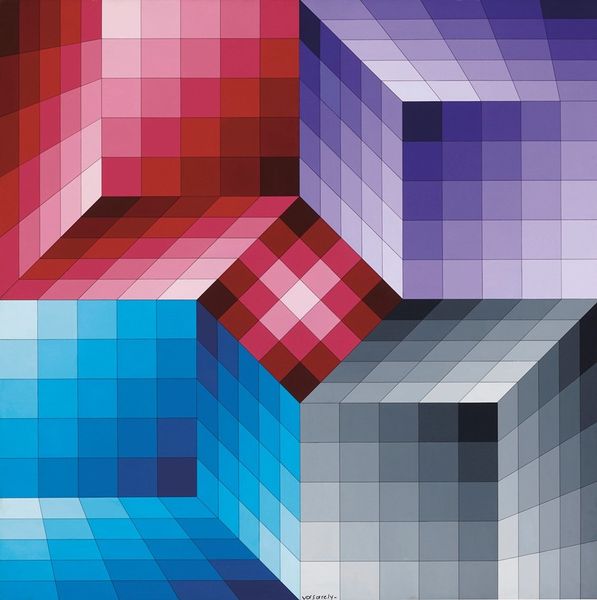
acrylic-paint
#
op-art
#
acrylic-paint
#
abstract
#
geometric pattern
#
subtle pattern
#
abstract pattern
#
minimal pattern
#
geometric
#
repetition of pattern
#
abstraction
#
pattern repetition
#
layered pattern
#
funky pattern
#
metal texture
#
geometric form
#
hard-edge-painting
Copyright: Modern Artists: Artvee
Editor: This is "Izzo 33," an acrylic on panel piece from 1969 by Victor Vasarely. It's a mesmerizing, seemingly impossible geometric form rendered in shades of blue. What’s fascinating to me is how something so rigorously geometric can evoke such a feeling of visual play and spatial ambiguity. What do you see in this work? Curator: I see Vasarely using geometry as a language to challenge our perception, echoing conversations in the '60s around space exploration and technological advancement. There's a Utopian vision at play here, almost a celebration of abstraction as a means of social levelling. He wanted to democratize art. Do you think this ambition comes across? Editor: Democratize art? I'm not sure. It still feels…distant somehow, clinical. All those hard edges. Curator: But consider the context. This was created in a period grappling with social hierarchies. The clean lines and mathematical precision could be interpreted as a rejection of established, ornate art forms favored by the elite. Think of it as a visual manifesto promoting equality and access. The very act of repetition here – the pattern of cubes – argues against individualistic genius. Editor: I suppose I can see that. The repetition does feel almost…mechanical, like it could be infinitely reproduced. But isn’t there a contradiction in that? Art as mass production? Curator: Exactly! That's the tension. He sought to erase the artist's hand while also creating unique visual experiences. This challenges notions of authenticity and authorship that had historically upheld a power structure within the art world. Are you suggesting that tension still remains? Editor: Absolutely! It highlights how hard it can be for any artwork, or any idea for that matter, to totally escape the social conditions of its creation. I'm starting to see those implications. Curator: Precisely! And this conversation itself – questioning, examining, and re-evaluating – is exactly where the power of art lies, as a mirror and a lens reflecting and refracting the complex relationship between art, society, and power.
Comments
No comments
Be the first to comment and join the conversation on the ultimate creative platform.
